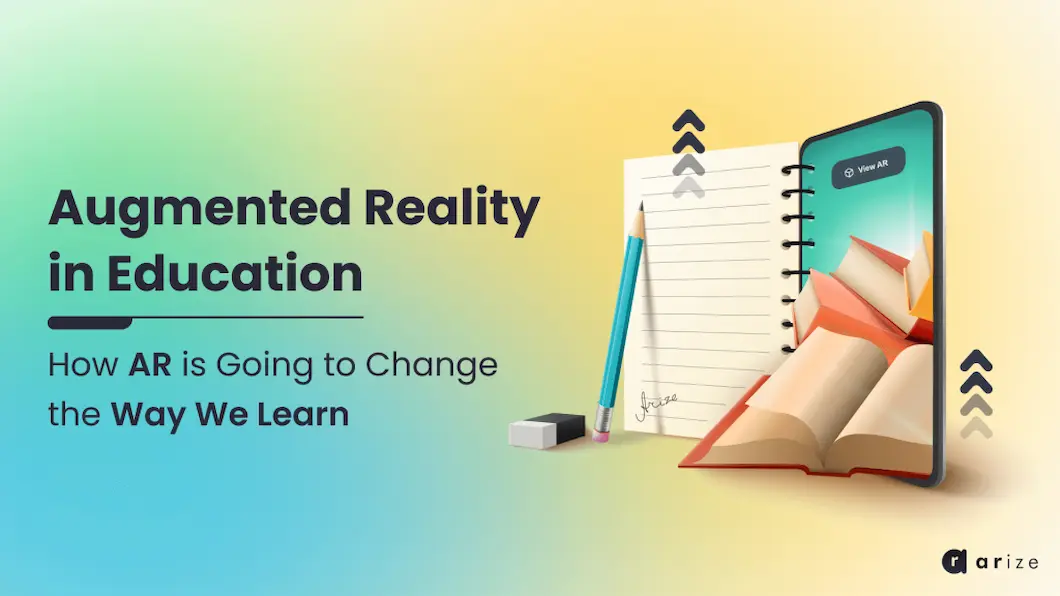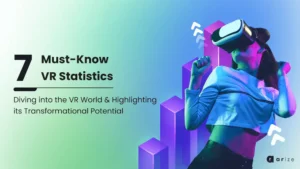Education has significantly benefited from technological advancements. Over the last few decades, access to information and technology has become more widespread.
However, the quality of the advancements has not always led to the same increase in the quality of education. Throughout history, the conventional teaching methodology has stuck students in a passive role, and academic prowess depends on the ability to memorize and regurgitate information.
While AR is not a new technology, it has recently attracted serious interest from educational institutions. According to industry analysis, the market for AR in education was valued at $1.5 billion in 2020 and will reach $85 billion by 2031.
The increase of AR in education is not surprising, as barriers to access have decreased globally.
Firstly, mobile devices and other hardware are as affordable and powerful as ever. Secondly, AR applications are user-friendly enough for teachers and students to use.
Why Augmented Reality is Important in Education
While most teachers prefer traditional teaching methods, AR technology continuously makes inroads into education. But what effect is it having on the students?
As students learn new information, they often find it difficult to disseminate and understand it without visuals or relatable examples. As a result, they may struggle to comprehend concepts, making understanding and, ultimately, education out of reach. AR applications can visually transform information and deliver it in a palatable and easy-to-understand way.
A recent study with students in Cape Town shows teaching with AR engages students more deeply and improves learning markers. Augmented reality applications were used to test how they impacted learning motivation. The results showed that the factors motivating attention, satisfaction, and confidence were increased, and these results were significant.
The Benefits of Augmented Reality in Education
AR is a tool that will significantly improve the learning experience by supplementing the real world with virtual objects in real time and immersing the students in their learning subjects.
This provides several genuine and significant benefits to them:
Increased Engagement
With the highly interactive learning experiences AR can provide, educators can spark enthusiasm and curiosity among students, which leads to them being more engaged, resulting in more effective learning.
Reduced Cognitive Load
AR learning significantly reduces the cognitive resources needed to grasp abstract concepts by clearly demonstrating and presenting them visually. Helping students focus more on learning subjects rather than trying to decipher the materials they are learning from.
Enhanced Learning Experience
AR lets students safely conduct dangerous experiments, visualize complex objects, and interact with situations and locations they would not have access to in real life, improving the quality of their learning and never providing before-seen insights into education.
Access to Learning Materials
Many institutions lack up-to-date teaching materials, giving students outdated or incomplete information they must investigate and complete independently. AR applications provide access to the latest data, which can be updated constantly and displayed in an interactive format.
Improved Academic Experience
All of this translates to one thing: with the hands-on learning approach provided by AR, students can achieve better knowledge retention, deepen their understanding of subjects, and perform better in an academic environment.
A Huge Leap Forward in Education
AR represents perhaps one of the most seismic shifts in education in history. While other developments have provided new ways to deliver the same old teaching methods, the introduction of Augmented Reality will completely revolutionize how students are taught.
Imagine going on a class trip without leaving your seat, or instead of reading about ancient Rome, taking a stroll through the streets, or talking to a famous historical figure to gain their perspective.
AR in education has a real opportunity to create a better method of learning, and as it continues to grow, and shows the results more and more.



